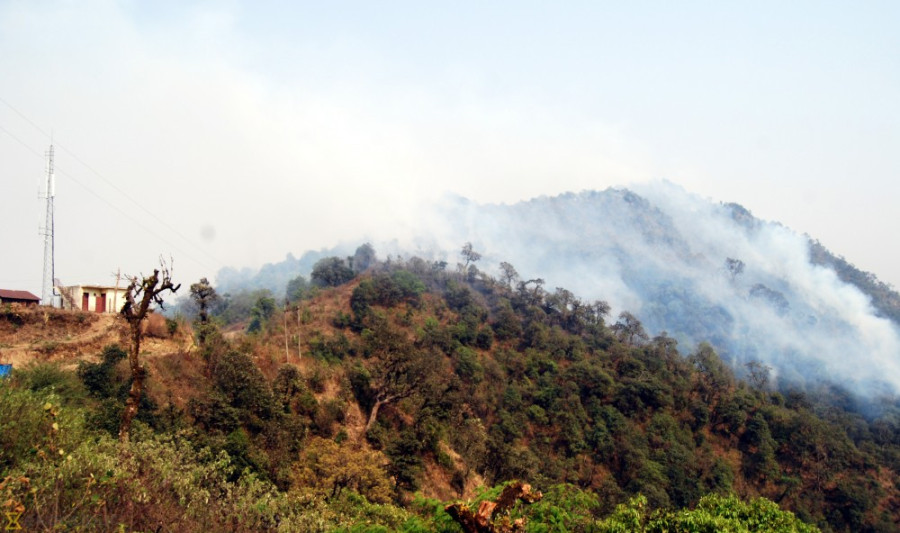Climate & Environment
Forest bill is faulty and it raises questions over ownership: Experts
The bill is a reflection of how the country’s bureaucracy still functions from the centralised mindset, they say
Chandan Kumar Mandal
Experts on forestry and natural resource management have slammed the government over the ‘Forest Bill’, calling it ambiguous and faulty, which reflects the tendency to consolidate power in the Centre.
The bill, which has been tabled in Parliament, has drawn criticism from community forest promoters for deviating from the notion of federalism.
Dil Khatri, an expert on forest management and executive director with Southasia Institute of Advanced Studies, said the current bill is a reflection of the centre’s attempt to grab more power.
The forest bill, according to critics, has failed to rightfully distribute powers among the three levels of government. The bill has also been accused of creating confusion regarding ownership of the forest resources.
“The bill says national forests will remain with provincial governments, but the rest of the strategies, other programmes and projects related to forests will be made by the federal government,” said Naya Sharma Paudel, an expert on forest governance. “The federal government can even declare a conservation area anywhere. Likewise, wetlands inside community forests will be overseen by the federal government. How then can community forest user groups claim their stake in forests?”
According to Paudel, staff for the Divisional Forest Office—the proposed forest office under the provincial government—will be appointed by the federal government, a move that will further erode the roles of provincial and local governments in managing the forests.
Once passed, the bill will replace the Forest Act-1993.
During an interaction in Kathmandu on Sunday, former forest secretary Krishna Gyawali said the current bill has problems in its content, motive and mandates.
“The forest bill has lost the opportunity to come up with institutional arrangements for maintaining harmony among environment, conservation and development,” said Gyawali. “The way power should have been given to the local level has not happened. If the bill stays in its current shape, it cannot even pass.”
As many as 17 lawmakers have registered a total of 140 proposals seeking amendments to the bill.
Another former forest secretary, Uday Raj Sharma pointed out that the legislation contains many errors and provisions that contradict other provisions in the bill itself.
“Rights and responsibilities of the local and provincial levels are not clear. The ownership of national forest should be with the federal government and the rest of the things should be handed over to the provincial and local governments,” said Sharma.
Participants also criticised the government for not discussing the bill adequately before tabling it in Parliament.
“Civil society’s engagement was lacking while drafting the bill. Government bodies had assured us that the proposed bill will not withdraw any provisions related to community forest in the previous Forest Act,” said Birkha Shahi, general secretary of the Federation of Community Forestry Users Nepal (FECOFUN). “But when we saw the draft, many things had changed.”
Mani Ram Banjade, a forestry expert, said the approach taken for drafting the bill was top-down and was brought to make the forest authority more powerful than the communities that actually protect a forest.
Stakeholders vented their ire at the legislation especially for trying to curtail the rights of community forests, which have done a remarkable job in conserving the country’s forests for decades.
Dinesh Paudel, an assistant professor in Sustainable Development at Appalachian State University, said there was no better option than community forest when it comes to conservation.
“Community forests have earned global recognition for conservation. Curtailing the rights of the community won’t help in forest conservation. It would rather see destruction,” said Paudel. “The bill is the outcome of the centralist mindset of bureaucracy.”
A total of 22,266 community forest user groups, which bring together 297,871 families, associated with FECOFUN, have been conserving 2,236,270 hectares of forest in almost all the districts of the country.
Bharati Pathak, the FECOFUN chairperson, said the current bill has failed to recognise local governments.
“Because of the conflict between the three levels of government over power-sharing in the federal structure, community forest is bearing the brunt,” said Pathak. “For example, the working procedures for community forest [management] need to be first approved by the local unit and then by the Divisional Forest Office. If the divisional forest officer doesn’t approve the document, it cannot move ahead. How many offices should the community forest users approach?”
Keshav Kadel, a forest economist, said the weakening of institutions like community forest is a cause for concern in conservation.
“Forest thrives on the institution and community forest is itself an institution. The state should be concerned about this institution, but it doesn’t mean it should be doing everything on its own,” said Kadel. “The international practice has shown that whenever the local institutions are weakened, there is massive deforestation, whereas when the government plays a facilitating role, forests flourish.




 5.47°C Kathmandu
5.47°C Kathmandu










